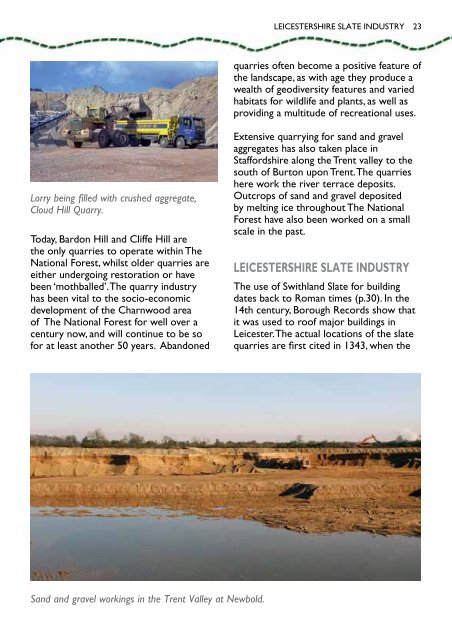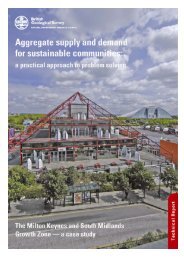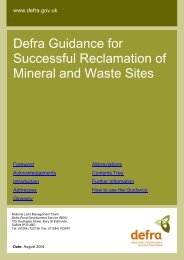Book - Sustainable Aggregates
Book - Sustainable Aggregates
Book - Sustainable Aggregates
Create successful ePaper yourself
Turn your PDF publications into a flip-book with our unique Google optimized e-Paper software.
LEICESTERSHIRE slate industry 23<br />
quarries often become a positive feature of<br />
the landscape, as with age they produce a<br />
wealth of geodiversity features and varied<br />
habitats for wildlife and plants, as well as<br />
providing a multitude of recreational uses.<br />
Lorry being filled with crushed aggregate,<br />
Cloud Hill Quarry.<br />
Today, Bardon Hill and Cliffe Hill are<br />
the only quarries to operate within The<br />
National Forest, whilst older quarries are<br />
either undergoing restoration or have<br />
been ‘mothballed’. The quarry industry<br />
has been vital to the socio-economic<br />
development of the Charnwood area<br />
of The National Forest for well over a<br />
century now, and will continue to be so<br />
for at least another 50 years. Abandoned<br />
Extensive quarrying for sand and gravel<br />
aggregates has also taken place in<br />
Staffordshire along the Trent valley to the<br />
south of Burton upon Trent. The quarries<br />
here work the river terrace deposits.<br />
Outcrops of sand and gravel deposited<br />
by melting ice throughout The National<br />
Forest have also been worked on a small<br />
scale in the past.<br />
LEICESTERSHIRE SLATE INDUSTRY<br />
The use of Swithland Slate for building<br />
dates back to Roman times (p.30). In the<br />
14th century, Borough Records show that<br />
it was used to roof major buildings in<br />
Leicester. The actual locations of the slate<br />
quarries are first cited in 1343, when the<br />
Sand and gravel workings in the Trent Valley at Newbold.

















